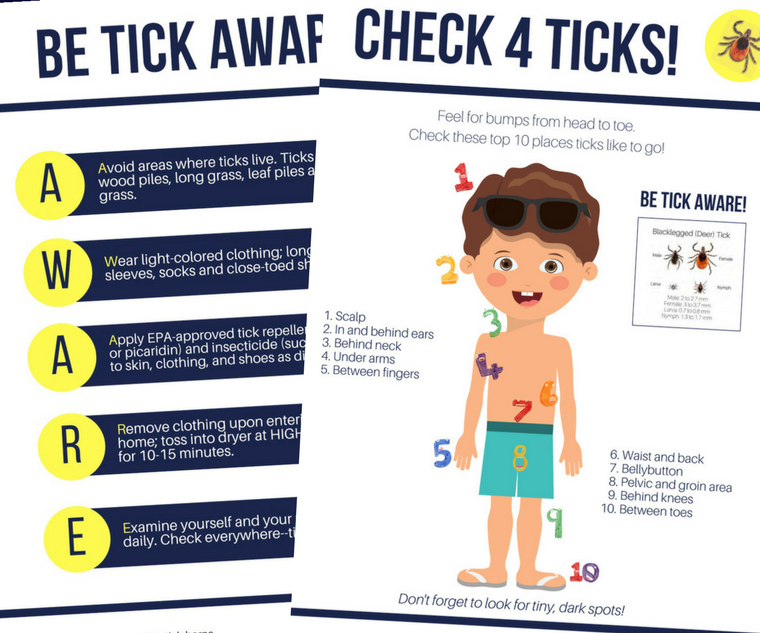
New Tick Prevention Program Aimed at Protecting Children at Summer Camps and Outdoor Activities.
GREENWICH, CONNECTICUT (July 17, 2017)
Summer camp season is well underway, but it’s not too late for parents and camp staff to ensure children are protected from Lyme and other tick-borne diseases. With scientists predicting an unprecedented outbreak of Lyme disease this year, children are at an increased risk not only for the tick-borne illness, but for its various debilitating co-infections such as Babesiosis, Anaplasmosis, Bartonella. and the potentially deadly Powassan virus. Children aged 3 to 14 have the highest incidence of Lyme in the U.S.
The disease is spread by tiny deer ticks (some about the size of a poppy seed). Ticks are found in many settings at outdoor camps, including playing fields, shady wooded areas and woodland trails, tall grasses, stone walls, leaf litter, fallen logs and even wooden picnic tables. “Ticks are out in force this summer and are just waiting for our unsuspecting children,” said Scott Santarella, CEO of Global Lyme Alliance (GLA), the leading nonprofit dedicated to conquering Lyme through research, education and awareness.
“These microscopic ticks pose a serious threat to youngsters, who run and play outdoors without caution. In an effort to protect campers from ticks and tick-borne illnesses, GLA partnered earlier this year with Ivy Oaks Analytics to educate summer camp directors about the threats posed by ticks. To date, 56 camps in 7 states known as hotbeds for ticks—Pennsylvania, New Jersey, New York, Connecticut, Virginia, Massachusetts and Maine—have signed on to receive GLA’s “ Be Tick Aware” prevention kits. Each kit contains a poster with awareness tips, a tick removal tool, a “Check 4 Ticks” body check poster and a tick ID card with magnifier.
“Kids look forward to summer camp and other outdoor activities,” said Sara Tyghter, GLA’s Director of Education and Outreach. “It’s a time for fun and creating memories of a lifetime. GLA wants those memories to be happy ones, unspoiled by tick-borne illness.” GLA has outlined steps that parents and camp staff can take to protect campers from ticks and tick-borne illnesses:
-
Make sure your child has, and uses, an EPA-approved tick repellent with at least 20% DEET, 20% Picaridin or 30% natural Lemon Eucalyptus oil. The repellents should be applied to exposed skin, avoiding hands and face.
-
Pack lightly-colored clothing that makes it easier to spot ticks. Clothing should be treated with permethrin, an insecticide that repels and kills ticks and mosquitos on contact. You can treat your own clothing with permethrin spray or purchase pre-treated clothes and gear from most online and outdoor retailers.
-
Don’t forget their shoes! Since many ticks crawl onto people from the ground, spraying closed-toe footwear with permethrin is one of the best defenses against ticks. (One study found that those with treated shoes had 74% fewer tick bites that those with untreated shoes).
-
If your child attends a day camp, as soon as they get home put their outdoor clothes in a dryer on high heat for 10 minutes. The high heat will effectively kill any ticks that may be crawling on their clothing.
-
Educate your child on how to do full body checks. Tick bites are painless, so it’s important for campers to perform regular tick checks both after outdoor activities and at the end of each day. GLA’s “Check 4 Ticks” body check poster illustrates the areas where ticks are most likely to attach, such as the armpits, naval and groin, in ear folds and behind the knees.
Added CEO Santarella: “Parents should educate their children about ticks and tick-borne diseases so when they get to camp, they will be fully prepared. Unfortunately, we know that ticks will be lying in wait for them.” For more information about tick safety and GLA’s “Be Tick Aware” prevention kits, visit BeTickAware.org.






-2.jpg)
